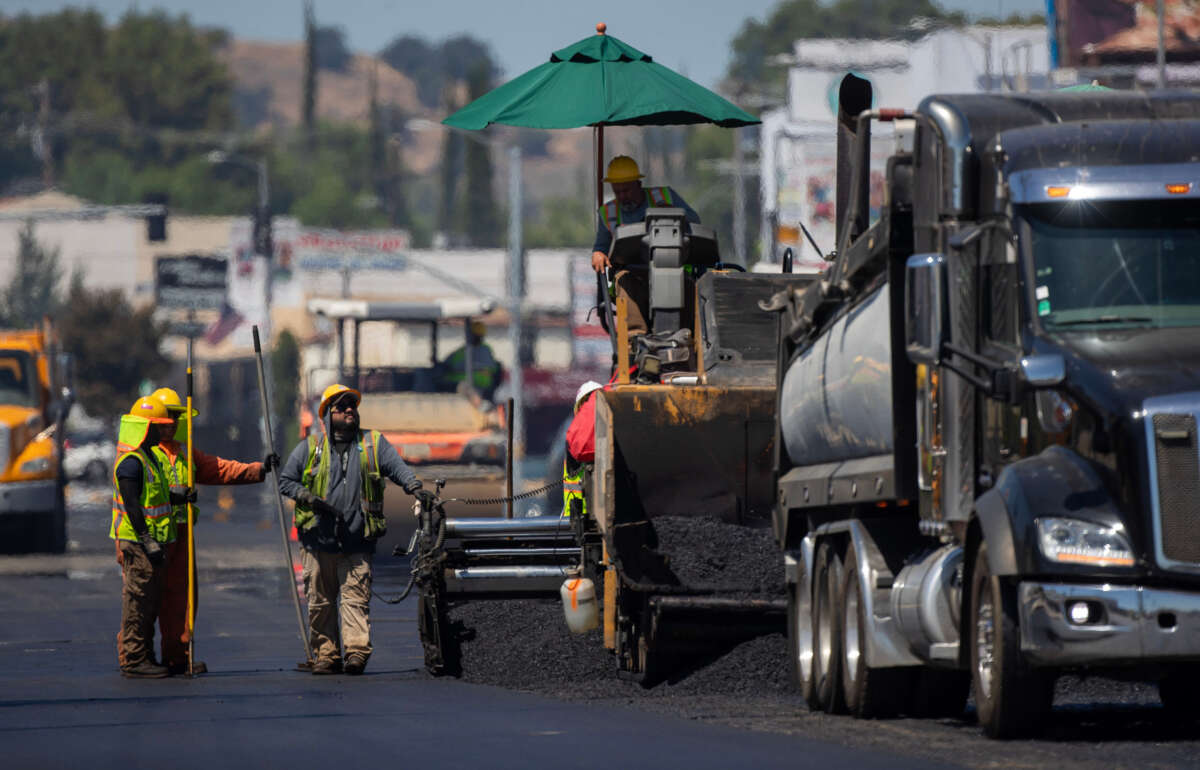Did you know that Truthout is a nonprofit and independently funded by readers like you? If you value what we do, please support our work with a donation.
The Biden Administration has announced new protections to keep outdoor workers safe from extreme heat, and instructed the Department of Labor to issue a heat hazard alert and increase enforcement of heat-safety violations.
“Millions of Americans are currently experiencing the effects of extreme heat, which is growing in intensity, frequency, and duration due to the climate crisis,” the administration said in a factsheet. “Today’s announcements build on numerous actions that the Biden-Harris Administration has taken to bolster heat response and resilience nationwide.”
Experts have stated that July was likely the hottest month in 120,000 years, prompting United Nations Secretary-General António Guterres to warn that “the era of global boiling has arrived.” In the United States, a summer heat wave in the South has lasted three months and affected more than 55 million people, killing at least a dozen people.
An average of 702 heat-related deaths occur in the United States each year, according to the Centers for Disease Control and Prevention (CDC). Because of the climate crisis, heatwaves have become more frequent and intense.
Outdoor workers are particularly vulnerable to heat-related illnesses such as heat exhaustion, heat stroke and dehydration. Between 1992 and 2016, excessive heat killed 783 U.S. workers and injured nearly 70,000. According to the CDC, heat stroke is the leading cause of death for farmworkers, and farmworkers are 20 times more likely to die from heat-related illnesses than U.S. civilian workers. Just in the past two weeks, at least two farmworkers, 30-year old Lopez Garcia and 25-year old Dario Mendoza, have died from heat-related illnesses in South Florida and Arizona.
“Given the projected increase in global temperatures and extreme heat events due to climate change, the adverse health impacts of occupational heat stress on agricultural communities are likely to increase in the future,” a 2022 article in Public Health explains.
In July, the Occupational Safety and Health Administration (OSHA) issued its first-ever heat hazard alert. The alert reminds employers that they have a legal duty to protect workers against heat and should, at minimum, provide workers with adequate cool water, rest breaks, and shade or a cool rest area for employees.
“Heat is a well-known and recognized occupational hazard for outdoor and indoor workers that can cause serious or fatal illness when they are not provided the necessary protections and training,” the heat hazard alert states. “Employers have a legal and moral responsibility not to assign work in high heat conditions without protections in place for workers, where they could be literally worked to death.”
This year, Texas averaged about 837 heat-related emergency department visits per 100,000 visits between June 18 and 24, compared to about 639 during the same time period last year. At least nine people have died of heat-related deaths in one South Texas county. From July 9 to 19, Austin saw an unprecedented 11-day streak of temperatures reaching a dangerous 105 degrees.
Amid this deadly heat wave, Texas Gov. Greg Abbott (R) signed HB 2127, the Texas Regulatory Consistency Act, which bars cities and counties from passing regulations that are stricter than state ones, effectively overturning ordinances in Austin and Dallas that mandate rest breaks for construction workers. Houston officials challenged this law in court in July.
The heat hazard alert directly reminds Texan employers that, despite this law, they are still federally required to provide protections for their workers. “This is true even in Texas, despite its recent law limiting local ordinances on heat illness protections,” the alert states.
“State laws that attempt to limit workers’ access to basic heat-illness prevention measures send a dangerous message that employers are not responsible for providing employees with a safe work environment,” Assistant Secretary for OSHA Doug Parker said in a statement. “In fact, that is simply not the case. Regardless of their job or where in the nation they work, workers have the right to a safe and healthy workplace. OSHA will use every tool and mechanism at our disposal to enforce those rights and make sure that every employee ends their workday safe and healthy.”
Media that fights fascism
Truthout is funded almost entirely by readers — that’s why we can speak truth to power and cut against the mainstream narrative. But independent journalists at Truthout face mounting political repression under Trump.
We rely on your support to survive McCarthyist censorship. Please make a tax-deductible one-time or monthly donation.
